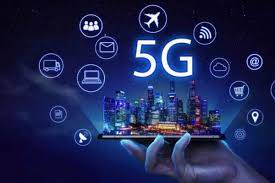5G and Emerging Technologies: Revolutionizing the Future
The advent of 5G technology is reshaping industries and catalyzing the development of various emerging technologies. As the fifth generation of wireless technology, 5G promises faster speeds, lower latency, and the ability to connect a significantly larger number of devices simultaneously. This revolutionary leap in connectivity is serving as the foundation for advancements in various sectors, including artificial intelligence (AI), the Internet of Things (IoT), autonomous vehicles, and virtual reality (VR). Together, 5G and these emerging technologies are ushering in a new era of innovation and growth.
5G’s Transformational Capabilities
5G networks offer unprecedented speed and data capacity, with download rates that can exceed 10 gigabits per second—up to 100 times faster than 4G. More importantly, 5G dramatically reduces latency, enabling near-instantaneous communication between devices. This low-latency capability is a game-changer for industries that require real-time data processing and control, such as healthcare, transportation, and manufacturing. Moreover, 5G can connect up to a million devices per square kilometer, making it the backbone for massive IoT networks, smart cities, and large-scale industrial automation.
The Internet of Things (IoT) Revolution
One of the most promising areas where 5G is accelerating innovation is the Internet of Things. IoT refers to a network of interconnected devices that can communicate and exchange data without human intervention. These devices range from everyday household appliances to sophisticated industrial machinery. 5G’s ability to handle a vast number of connected devices, coupled with its speed and reliability, is fueling the expansion of IoT applications.
For instance, in smart cities, 5G-enabled sensors can monitor traffic patterns, manage energy consumption, and improve waste management systems. In agriculture, IoT devices powered by 5G can collect real-time data on soil conditions, weather, and crop health, enabling precision farming that boosts efficiency and sustainability. The healthcare sector also stands to benefit, with connected medical devices allowing for remote patient monitoring and quicker responses to emergencies.
Autonomous Vehicles and Transportation
The future of transportation is becoming increasingly autonomous, and 5G is playing a crucial role in making self-driving cars a reality. Autonomous vehicles rely on real-time data from a variety of sensors, cameras, and radars to navigate safely and make split-second decisions. With its ultra-low latency, 5G ensures that these vehicles can communicate with each other and with infrastructure almost instantaneously, reducing the risk of accidents and improving traffic flow.
In addition to autonomous cars, 5G is enabling advancements in logistics and supply chains. Smart transportation systems powered by 5G can optimize route planning, monitor vehicle conditions in real time, and streamline the delivery of goods.
Virtual Reality (VR) and Augmented Reality (AR)
The immersive experiences offered by virtual reality (VR) and augmented reality (AR) are transforming sectors like entertainment, education, and retail. However, the current limitations of network bandwidth and latency have hindered the widespread adoption of these technologies. With 5G, the possibilities for VR and AR are greatly expanded. Faster data speeds allow for the seamless streaming of high-definition content, while lower latency enhances the responsiveness of virtual environments.
In the field of education, students can participate in immersive learning experiences, such as virtual field trips or interactive simulations. In retail, AR can be used to create virtual fitting rooms or enhance online shopping by allowing customers to visualize products in their real-world environments.
AI and Machine Learning Integration
The combination of 5G and artificial intelligence (AI) has the potential to drive unprecedented levels of automation and intelligence across industries. AI systems rely heavily on the rapid processing of large datasets, and 5G’s high-speed networks enable faster data collection and analysis. In manufacturing, AI-powered robots can respond more quickly to changes in production processes, reducing downtime and increasing efficiency.
Furthermore, AI-driven healthcare applications, such as predictive diagnostics and personalized medicine, can leverage 5G’s ability to transmit vast amounts of data quickly and securely, improving patient outcomes and streamlining medical workflows.
Conclusion
5G technology is more than just a faster network—it is a foundational element for the next wave of technological innovation. By enabling faster communication, lower latency, and broader device connectivity, 5G is fueling the growth of emerging technologies like IoT, autonomous vehicles, VR/AR, and AI. As these technologies continue to develop, they will reshape industries, improve efficiencies, and transform the way we live and work. The synergy between 5G and these emerging technologies is poised to revolutionize the future.



No comments yet
Be the first to share your thoughts!